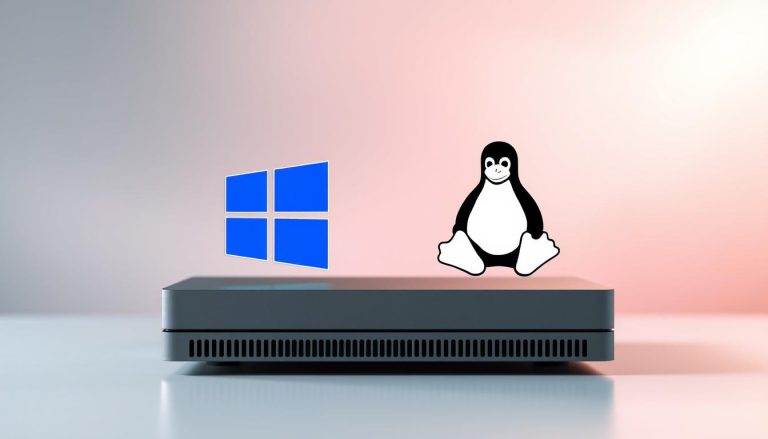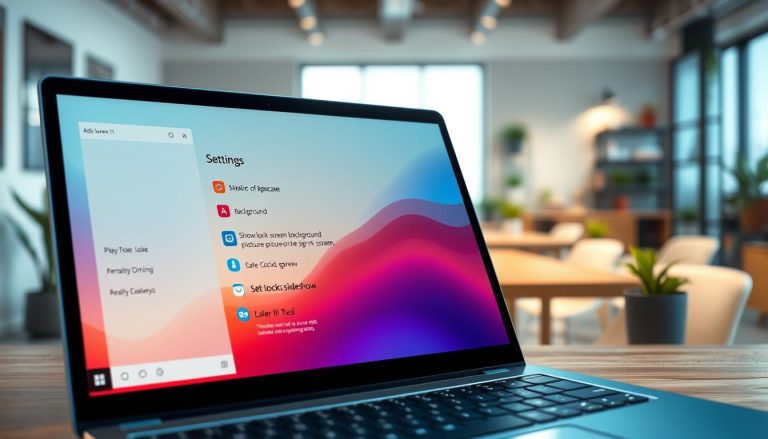Welcome to the world of Windows Vista! In this article, I will take you on a journey to uncover the history, features, and significance of Microsoft’s Windows NT operating system. Whether you’re a tech enthusiast or simply curious about this iconic release, you’re in the right place.
Key Takeaways
- Windows Vista is a major release of Microsoft’s Windows NT operating system.
- It was released to manufacturing on November 8, 2006, and became generally available on January 30, 2007.
- Vista introduced the Aero visual style, Windows Search, redesigned networking, audio, print, and display sub-systems.
- Despite facing criticism, Windows Vista played a significant role in the evolution of the Windows operating system.
- Support for Windows Vista has officially ended, and users are encouraged to upgrade to a newer operating system.
The Development of Windows Vista
In May 2001, Microsoft embarked on the development of Windows Vista, initially codenamed “Longhorn.” This project began shortly before the release of Windows XP, with the intention of creating a small upgrade to bridge the gap between XP and the next major Windows version, codenamed Blackcomb. However, as development progressed, many of Blackcomb’s features were incorporated into Vista, resulting in it being repositioned as a significant release.
One of the most notable aspects of Windows Vista was its updated graphical user interface and visual style, known as Aero. This modern and sleek design introduced new visual elements and improved the overall user experience. However, the development process was not without its challenges. Several revisions and delays occurred, leading to the removal or postponement of previously announced features.
The development of Windows Vista went through multiple iterations, with its features evolving over time. Despite the obstacles faced, Microsoft’s commitment to security was evident in the incorporation of the Security Development Lifecycle to address concerns with the Windows codebase.
Impact of the Codename Change
In 2005, the project previously known as Longhorn officially became Windows Vista. This new name reflected the product’s evolution and highlighted the significant changes and improvements introduced. Windows Vista marked a new chapter in the Windows operating system’s history, setting the stage for future releases and the evolution of the Windows interface and functionality.
Table: Windows Vista Development Timeline
| Date | Significant Milestone |
|---|---|
| May 2001 | Development of Windows Vista (then Longhorn) begins |
| 2005 | Longhorn officially becomes Windows Vista |
| November 8, 2006 | Windows Vista released to manufacturing |
| January 30, 2007 | Windows Vista becomes generally available |
| 2009 | Windows 7 succeeds Windows Vista |
Features and Criticism of Windows Vista
Windows Vista introduced several new features and improvements that aimed to enhance the user experience and functionality of the operating system. One of the most notable changes was the Aero visual style, which brought a sleek and modern look to the Windows interface. With Aero, users could enjoy translucent window borders, live thumbnails in the taskbar, and smooth animations, providing a visually engaging experience.
In addition to the visual enhancements, Windows Vista also introduced Windows Search, a powerful tool that allowed users to quickly find files, documents, and applications on their computer. This feature significantly improved productivity, making it easier to locate content and access it with just a few clicks.
Furthermore, Windows Vista incorporated redesigned networking, audio, print, and display sub-systems, which improved the performance and compatibility of these essential components. It also introduced new multimedia tools, such as Windows DVD Maker, which allowed users to create professional-looking DVDs with ease.
Despite these new features and improvements, Windows Vista faced significant criticism. One of the main issues was its high system requirements, which made it difficult for older computers to run the operating system smoothly. This led to frustration among users who experienced slower performance or had to upgrade their hardware to use Vista.
Another criticism was the more restrictive licensing terms of Windows Vista compared to its predecessor, Windows XP. The new licensing terms limited the number of installations allowed per license, which caused inconvenience for users who frequently upgraded or changed their computers.
The User Account Control (UAC) also garnered negative feedback as it presented users with excessive authorization prompts, often interrupting workflow and causing frustration. This feature aimed to enhance security by preventing unauthorized changes to the system, but its implementation was seen as intrusive and annoying by many.
| Feature | Description |
|---|---|
| Aero visual style | Introduced a modern and visually appealing interface with translucent window borders, live thumbnails, and smooth animations. |
| Windows Search | Powerful search tool that improved file and application discovery, enhancing productivity. |
| Redesigned networking, audio, print, and display sub-systems | Enhanced performance and compatibility of essential components. |
| New multimedia tools | Windows DVD Maker allowed users to create professional-looking DVDs. |
Windows Vista Support and End of Life
Windows Vista, a major release of Microsoft’s Windows NT operating system, received support from Microsoft for several years before reaching its end of life. Mainstream support for Windows Vista ended on April 10, 2012, and extended support concluded on April 11, 2017. While this means that non-security updates or free support are no longer provided, users can still access security updates and paid support options.
Microsoft recommends that users upgrade to a newer operating system, such as Windows 7 or a later version, to continue receiving regular updates, improved performance, and enhanced security features. With the end of support, Windows Vista ceased sales of retail copies on October 22, 2010, followed by the discontinuation of original equipment manufacturer’s sales the following year.
To better understand the timeline of Windows Vista’s support and end of life, refer to the table below:
| Support Phase | Start Date | End Date |
|---|---|---|
| Mainstream Support | November 30, 2006 | April 10, 2012 |
| Extended Support | April 11, 2012 | April 11, 2017 |
| End of Sales | October 22, 2010 | N/A |
| End of OEM Sales | October 22, 2011 | N/A |
With the end of support for Windows Vista, users are encouraged to upgrade to a newer operating system to ensure a secure and up-to-date computing experience. Upgrading to the latest versions of Windows provides access to improved features, optimizations, and ongoing support from Microsoft.
Key Takeaways:
- Windows Vista’s support ended on April 11, 2017, with extended support concluding.
- Microsoft recommends users upgrade to a newer operating system for continued support.
- Windows Vista ceased sales of retail copies on October 22, 2010.
- Original equipment manufacturer’s sales for Windows Vista ended on October 22, 2011.
Conclusion
After exploring the basics, development, features, and criticism of Windows Vista, it is clear that this operating system played a significant role in the evolution of Windows. Despite its flaws and the criticism it faced, Vista introduced new features and improvements that laid the foundation for future releases.
However, it is important to note that official support for Windows Vista has ended. Microsoft recommends users to upgrade to a newer operating system, such as Windows 7 or later, to ensure better performance and security.
In conclusion, Windows Vista may have had its challenges, but it marked an important milestone in the Windows NT operating system. As technology continues to advance, it is crucial for users to stay up to date with the latest operating systems to fully leverage the benefits they offer.
FAQ
What is Windows Vista?
Windows Vista is a major release of Microsoft’s Windows NT operating system that was released to manufacturing on November 8, 2006, and became generally available on January 30, 2007.
What is the history of Windows Vista?
The development of Windows Vista began in 2001 under the codename “Longhorn” as a small upgrade to bridge the gap between Windows XP and the next major Windows version.
What are the features of Windows Vista?
Windows Vista introduced the updated graphical user interface and visual style Aero, Windows Search, redesigned networking, audio, print, and display sub-systems, and new multimedia tools such as Windows DVD Maker.
What were some criticisms of Windows Vista?
Windows Vista received significant criticism for its high system requirements, more restrictive licensing terms, lack of compatibility, longer boot time, and excessive authorization prompts from User Account Control.
What is the support status of Windows Vista?
Mainstream support for Windows Vista ended on April 10, 2012, and extended support ended on April 11, 2017. Microsoft recommended users to upgrade to a newer operating system, such as Windows 7 or later.
Janina is a senior specialist in information technology


